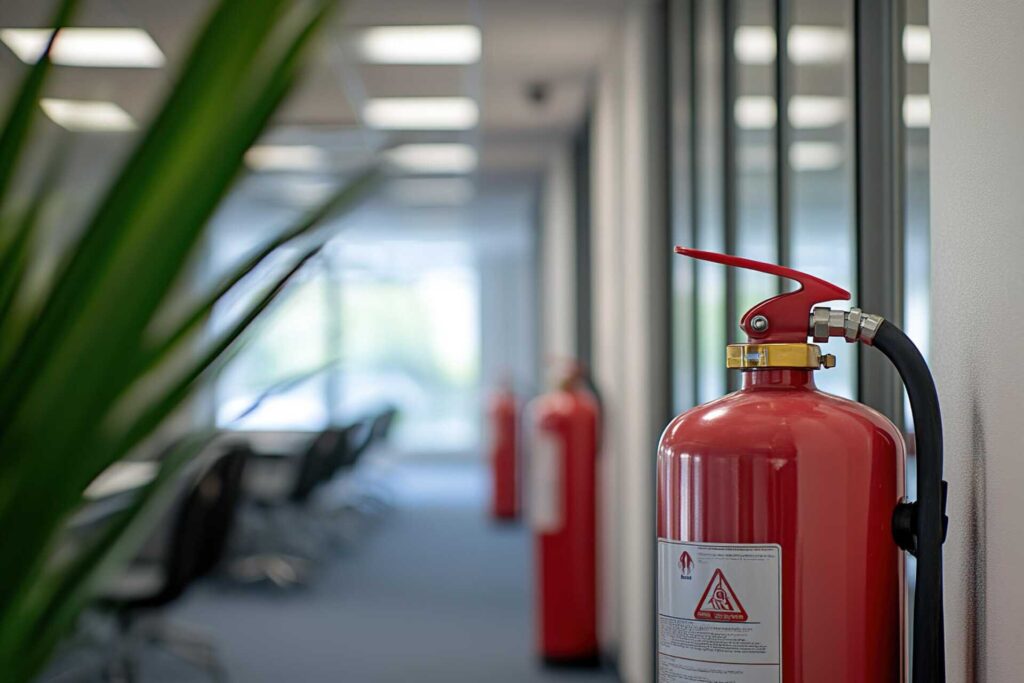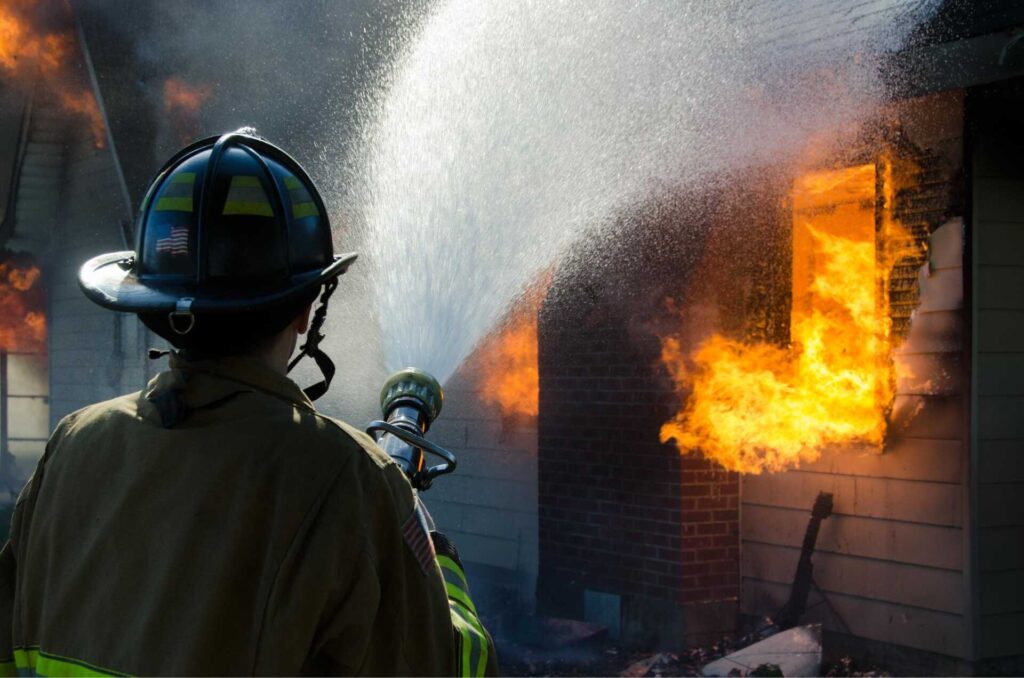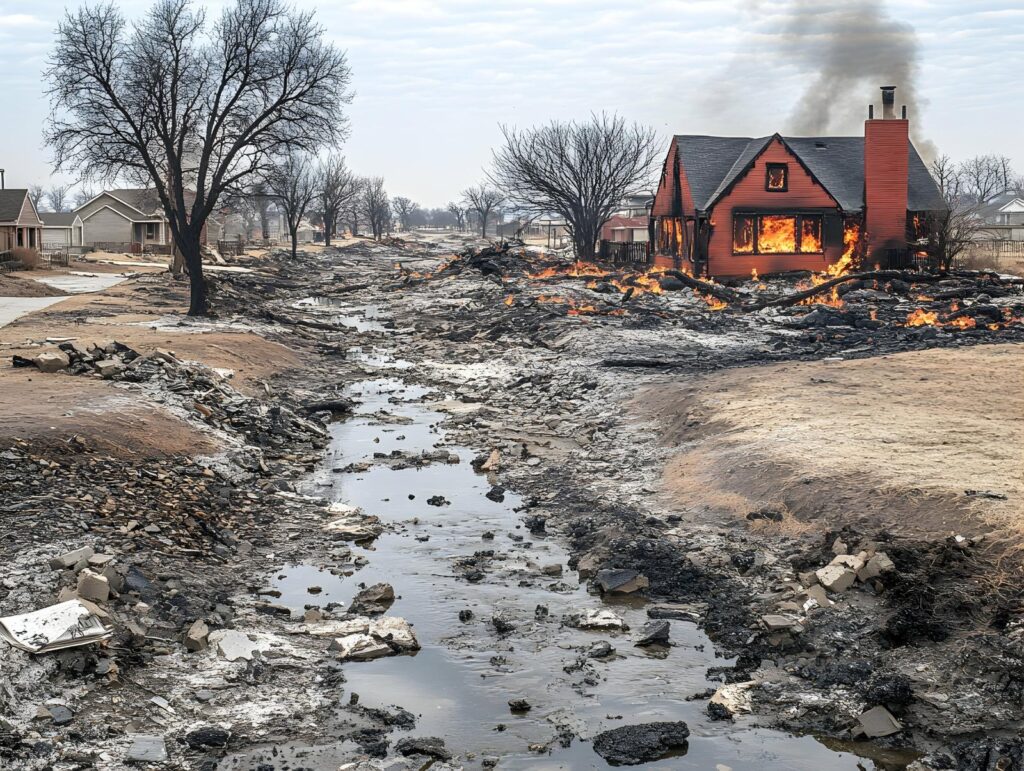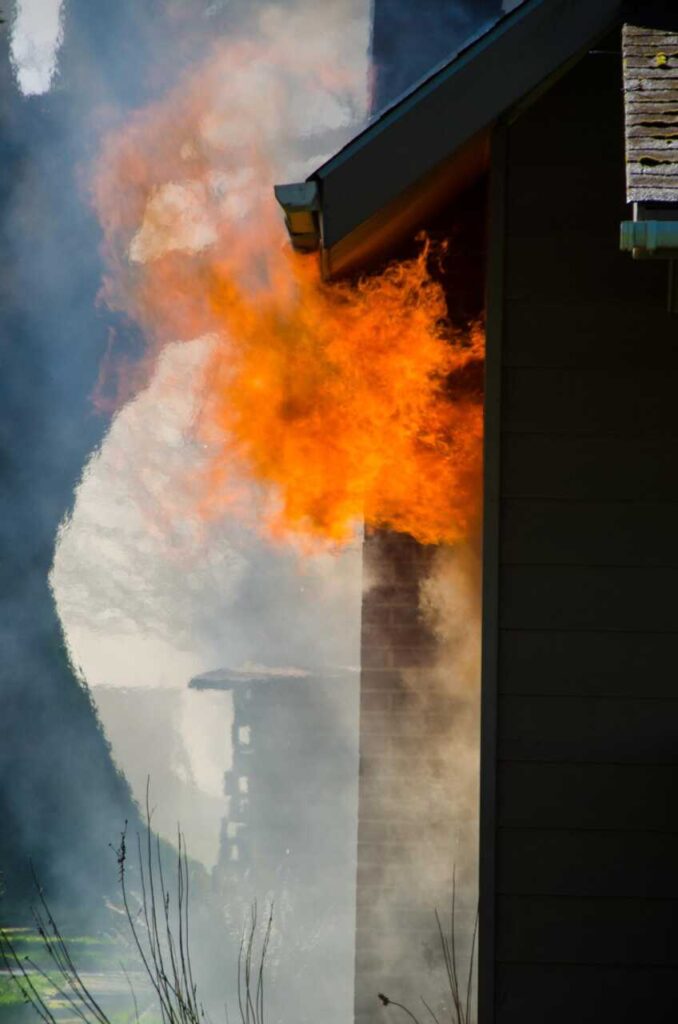
Contents
When your business faces fire damage, understanding the fire damage cleanup methods can make all the difference in recovery. You’ll need to assess the extent of the damage, prioritize safety, and tackle smoke and soot removal efficiently. Implementing strategies for water extraction and addressing structural repairs are crucial steps, but the process doesn’t end there. What about the lingering odors and salvaging important contents? Exploring these vital aspects can significantly impact your business’s restoration journey, leaving you with critical choices to consider.
Key Takeaways
- Conduct a thorough damage assessment to identify affected areas and categorize fire damage types for effective cleanup strategies.
- Utilize specialized equipment like HEPA-filter vacuums and dry cleaning sponges for efficient smoke and soot removal.
- Implement powerful water extraction techniques to minimize moisture and prevent mold growth following fire suppression efforts.
- Employ advanced dehumidification and air purification systems to control humidity levels and eliminate lingering odors.
- Document all findings meticulously to support insurance claims and enhance recovery efforts through detailed reporting.
Types of Fire Damage
When it comes to fire damage, you need to break down the various types to fully understand the implications for your business. Understanding fire types is crucial, as they determine the damage categories your property might experience. The three primary fire types are: natural, electrical, and chemical. Each presents unique challenges and requires specific cleanup strategies.
Natural fires, often resulting from wildfires or lightning, can cause extensive damage to both structures and surrounding landscapes. You’ll notice charring, smoke damage, and possible structural integrity issues.
Electrical fires, frequently caused by faulty wiring or equipment, can lead to significant damage as well, often leaving behind soot and residue that can be harmful to both your property and your health.
Finally, chemical fires, which may arise from hazardous materials or flammable substances, damage property and pose serious health risks due to toxic fumes and residues.
Recognizing these fire types helps you categorize the damage accurately. Each category requires a tailored approach for effective remediation.
For example, smoke damage may necessitate specialized cleaning methods to restore air quality, while structural damage might need professional evaluation to ensure safety.
Initial Assessment Process
When you assess fire damage, start by evaluating the extent of the destruction using systematic techniques.
Identify any safety hazards that could pose risks during cleanup and ensure everyone’s safety.
Lastly, document and report your findings meticulously, as this information will guide your recovery efforts and help with insurance claims.
Damage Evaluation Techniques
After a fire, jumping into damage evaluation is crucial for businesses to understand the extent of the destruction and prioritize recovery efforts. Start with a thorough damage assessment by inspecting both the visible and hidden areas affected by the fire. Look for charred materials, smoke stains, and water damage from firefighting efforts. Document everything meticulously, as this information will guide your restoration techniques and help with insurance claims.
Utilize specialized tools like thermal imaging cameras to identify heat pockets and moisture meters to detect hidden water damage. These tools can reveal issues that may not be immediately apparent, ensuring a comprehensive evaluation.
Don’t forget to assess the structural integrity of the building; any compromise could pose significant safety risks during the restoration process.
Involving a knowledgeable team during this phase is essential. Their expertise will provide deeper insights and help you prioritize which areas require immediate attention.
Safety Hazard Identification
Identifying safety hazards during the initial assessment process is crucial for ensuring the well-being of everyone involved in the fire damage cleanup. You’ll need to conduct thorough hazard recognition to identify potential threats, which can range from structural instability to hazardous materials. Performing a detailed risk assessment helps prioritize these hazards, ensuring a safer environment for your team.
Here’s a quick reference table to help you during your assessment:
| Hazard Type | Description |
|---|---|
| Structural Hazards | Collapsing walls or ceilings |
| Electrical Hazards | Exposed wires or damaged circuits |
| Chemical Hazards | Spilled flammable substances |
| Smoke and Air Quality | Toxic smoke inhalation risks |
| Fire Residue | Leftover ash or embers posing fire risk |
Documentation and Reporting
Effective documentation and reporting during the initial assessment process is vital for successful fire damage cleanup. When you evaluate the scene, start by meticulously recording the extent of the damage. Use clear documentation practices to note affected areas, materials, and any hazards that might pose risks during cleanup. This thorough approach helps in coordinating the cleanup efforts and serves as a reference for insurance claims.
As you compile your findings, adhere to established reporting standards to ensure accuracy. Create a detailed report that outlines your observations, including photographs and sketches if possible. This documentation will provide a comprehensive overview of the damage, which is crucial for both recovery efforts and future prevention strategies.
Don’t overlook the importance of collaborating with your team. Sharing insights and observations will strengthen your documentation and enhance the overall assessment process.
Safety Precautions to Consider
When facing fire damage cleanup, it’s crucial to prioritize safety to protect yourself and your team. Start by ensuring everyone is aware of the emergency evacuation plans. These plans should outline the safest routes and meeting points outside the building. Regular drills can help everyone familiarize themselves with the procedures, so they know exactly what to do in a panic.
Next, equip yourself and your team with appropriate personal protective equipment (PPE). This gear is essential to shield against potential hazards. Make sure everyone wears safety goggles, gloves, hard hats, and respirators to protect against smoke and soot exposure.
Also, sturdy footwear is important to prevent injuries from debris.
Before beginning cleanup, assess the structural integrity of the building. Look for signs of damage or instability, and if there’s any doubt, consult a professional. It’s also wise to check for any hidden hazards, such as electrical issues or gas leaks, which could pose further risks.
Additionally, establish a communication plan. Everyone should know how to reach each other during the cleanup process and have a point person for questions or concerns.
Ensure that your team understands the importance of reporting any unsafe conditions immediately.
Smoke and Soot Removal Techniques
After ensuring safety protocols are in place, the next step involves addressing the significant issue of smoke and soot removal. Smoke and soot can deeply penetrate porous materials and surfaces, creating lingering odors and potential health risks for you and your employees.
To begin the process effectively, you’ll want to assess the extent of the damage. This includes identifying affected areas and materials, like walls, ceilings, carpets, and furniture.
For effective smoke removal, start by ventilating the space. Open windows and use fans to encourage airflow, helping to dissipate odors.
Next, employ specialized vacuum cleaners equipped with HEPA filters to capture soot particles without spreading them further. For surfaces, a combination of dry cleaning sponges and chemical cleaners will be necessary. These sponges are designed to lift soot without smearing it, and the cleaners help break down the residues.
Soot remediation can also involve washing walls and ceilings with a mixture of water and a mild detergent. For tougher stains, consider using a mixture of water and vinegar or commercial soot removers. Always test a small area first to ensure no damage occurs.
Finally, don’t overlook air purification systems with activated carbon filters, which can help eliminate lingering odors.
Water Damage Management
When dealing with water damage, your first step is effective water extraction to prevent further structural issues.
Following extraction, you’ll need to focus on drying and dehumidification to eliminate residual moisture and inhibit mold growth.
Implementing these methods systematically will help restore your business to its pre-damage condition efficiently.
Water Extraction Techniques
In the aftermath of fire damage, effective water extraction techniques are crucial for minimizing further complications. Water can accumulate from firefighting efforts, leading to additional hazards like mold growth and structural issues.
To tackle this, you should focus on using powerful pumps to remove standing water quickly. Submersible pumps are ideal for deep water, while wet/dry vacuums work well for smaller areas.
Once you’ve removed the bulk of the water, it’s essential to address residual moisture. Employing specialized equipment, like high-capacity dehumidifiers, can facilitate moisture control. These machines help reduce humidity levels in the affected space, preventing mold spores from taking hold.
Don’t overlook the importance of inspecting and cleaning your HVAC systems, as trapped moisture can circulate through the air, spreading contaminants.
Remember, thorough water extraction is a vital step in restoring your business. By acting methodically and promptly, you can protect your property from further damage and ensure a safe environment for your employees and customers.
Staying informed and engaged in the cleanup process fosters a sense of belonging and responsibility, helping you rebuild with confidence.
Drying and Dehumidification Processes
Effective drying and dehumidification processes are essential for restoring a commercial space after fire damage. When water damage occurs, whether from firefighting efforts or residual moisture, it’s crucial to act quickly.
Begin by assessing the extent of the damage and identifying areas most affected by moisture.
Utilizing advanced dehumidification techniques, you can effectively remove excess moisture from the air and surfaces. High-capacity dehumidifiers should be strategically placed throughout the area to ensure optimum moisture control.
Monitor humidity levels consistently to gauge progress, aiming to maintain levels below 60% to prevent mold growth.
Alongside dehumidifiers, employing air movers can significantly enhance air circulation, promoting faster drying.
It’s also wise to inspect hidden spaces such as wall cavities and under flooring, as moisture can linger unnoticed.
Incorporating these methods accelerates the drying process and protects your business from further complications.
Remember, effective moisture control is vital in preserving the integrity of your property and ensuring a safe environment for your employees and customers.
Structural Repairs and Restoration
After a fire, addressing structural repairs and restoration is crucial for the safety and longevity of your business premises. You need to ensure the structural integrity of your building is restored to prevent future hazards. Here are some essential steps to guide you through the process:
- Assessment: Start by having professionals assess the extent of the damage. They’ll identify compromised areas, including walls, beams, and roofs, ensuring you understand what repairs are necessary.
- Planning: Once you’ve assessed the damage, create a detailed plan. This should include the restoration techniques you’ll use, timelines, and budget considerations. Collaborating with contractors who specialize in fire damage restoration will help streamline this phase.
- Execution: It’s time to implement your plan. Depending on the assessment, you may need to replace or reinforce structural components. Use high-quality materials to ensure durability and comply with local building codes.
Throughout this process, communication is key. Keep your team informed and engaged, fostering a sense of belonging as you navigate this challenging time together.
Odor Elimination Strategies
Once you’ve tackled structural repairs, addressing lingering odors from smoke and fire damage becomes vital to restoring a healthy environment in your business. Odors can be persistent, affecting the air quality and the comfort of your employees and customers.
To effectively eliminate these odors, you’ll want to employ a combination of odor neutralization techniques and scent masking solutions.
Start with identifying the source of the odor. This will often be materials that have absorbed smoke, such as carpets, drapes, or furniture. Once identified, consider using odor neutralization techniques like ozone generators, which can break down odor-causing compounds at a molecular level.
Another effective method is using HEPA air purifiers equipped with activated carbon filters that capture and neutralize smoke particles.
For immediate relief, scent masking solutions can be helpful. Commercial-grade air fresheners or essential oil diffusers can temporarily mask unpleasant smells while you work on deeper cleaning. However, be cautious with these solutions; they shouldn’t replace thorough cleaning and deodorization.
Additionally, ensure proper ventilation throughout your space. Opening windows and using fans can help disperse odors more quickly.
Sometimes, professional cleaning services that specialize in fire damage can provide the expertise and equipment required for effective odor elimination.
Contents Cleaning and Salvage
In the aftermath of fire damage, addressing the contents of your business is crucial for a successful recovery. You may feel overwhelmed, but understanding the contents restoration process can help you reclaim what’s valuable.
Here are three essential steps to consider in your salvage efforts:
- Assess the Damage: Start by examining all items, from furniture to documents. Identify which pieces can be salvaged and which are beyond repair. This assessment is key to prioritizing your efforts and resources.
- Implement Salvage Techniques: Different materials require specific cleaning methods. For instance, textiles can often be cleaned and restored with water and specialized detergents, while metal surfaces might need polishing to remove soot. Research and employ appropriate salvage techniques to ensure maximum recovery.
- Document Everything: As you clean and salvage, take detailed notes and photographs of your efforts. This documentation can be invaluable for insurance claims and may also help you track your progress as you work toward restoring your business.
Professional Cleanup Services
While salvaging contents is an important step, it’s equally vital to enlist professional cleanup services to handle the extensive damage caused by fire. These experts are trained to assess your specific situation and develop a tailored response. They understand that every fire incident is unique and requires a methodical approach to restore your business effectively.
Utilizing advanced cleaning technologies, professional services can efficiently remove soot, smoke, and hazardous materials that may linger post-fire. High-powered vacuums, specialized air scrubbers, and thermal fogging equipment are just a few tools they employ to ensure a thorough cleanup. By using these technologies, they clean and help to mitigate further damage, such as mold growth or lingering odors.
Restoration protocols are another critical aspect of professional cleanup. These guidelines enable technicians to approach restoration in a systematic way, ensuring no area is overlooked. They follow industry standards to safely restore your property, addressing structural integrity and the health of your environment.
You’ll find that their expertise speeds up the recovery process and provides peace of mind, knowing your business is in capable hands.
Choosing professional cleanup services means you’re investing in a comprehensive recovery plan. Your business deserves to be restored with the highest level of care and attention to detail. By collaborating with these specialists, you can reclaim your space and begin the journey back to normalcy, fostering a sense of belonging within your community once again.
Wrap-Up
Effective fire damage cleanup is crucial for restoring your business and ensuring a safe environment. By following systematic methods—like thorough smoke removal, water extraction, and structural repairs—you can significantly increase your chances of recovery. Don’t underestimate the importance of professional cleanup services; they possess the expertise and equipment needed to tackle the complexities of fire damage efficiently.



